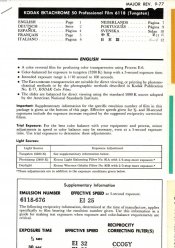Stephen Benskin
Member
Steve
All the theory aside, what PE explains here matches very well with practical B&W photographic experience, and years of film and paper testing.
As you well know, B&W negative film, exposed at ISO speeds, is not very forgiving to underexposure, but it needs excessive overexposure before highlight compression becomes a real problem.
Yes it does and I agree and so does the theory I'm talking about because most of it is based on psychophysical testing. One thing we should point out is in all psychophysical testing such as the first excellent print tests or any type of evaluation of quality for that matter, there will be a range of opinions as to the degree of quality. I suggest we should keep that in mind when suggesting any preferred approach. As you might have noticed, I don't advocate any one approach. When I talk about the ZS testing method, I deal with the correctness of the speed values and not whether the resulting exposure works (it does BTW). For some it might be nit-picky, but to me the knowledge is freeing.
I also agree there is a great deal of overexposure latitude. Anyone who is familiar with the results of the first excellent print test can attest to that. In fact, I believe you have a graph of those results in your book on page 141. While my metering technique is rather complex and is contingent on the subject and the desired results, I too generally place values slightly higher on the curve for better shadow separation and so that in printing I have a greater range of choices on how to print them. Still, there is a one stop underexposure latitude just in case. While many discerning observers might not appreciate the diminished shadow separation, the safety factor is there.
We are in violent agreement on the desired results and application. We just have disagreements on the theory involved, and for me, theory is fun to talk about.
Last edited by a moderator:





 and 1 equally vintage D76
and 1 equally vintage D76

